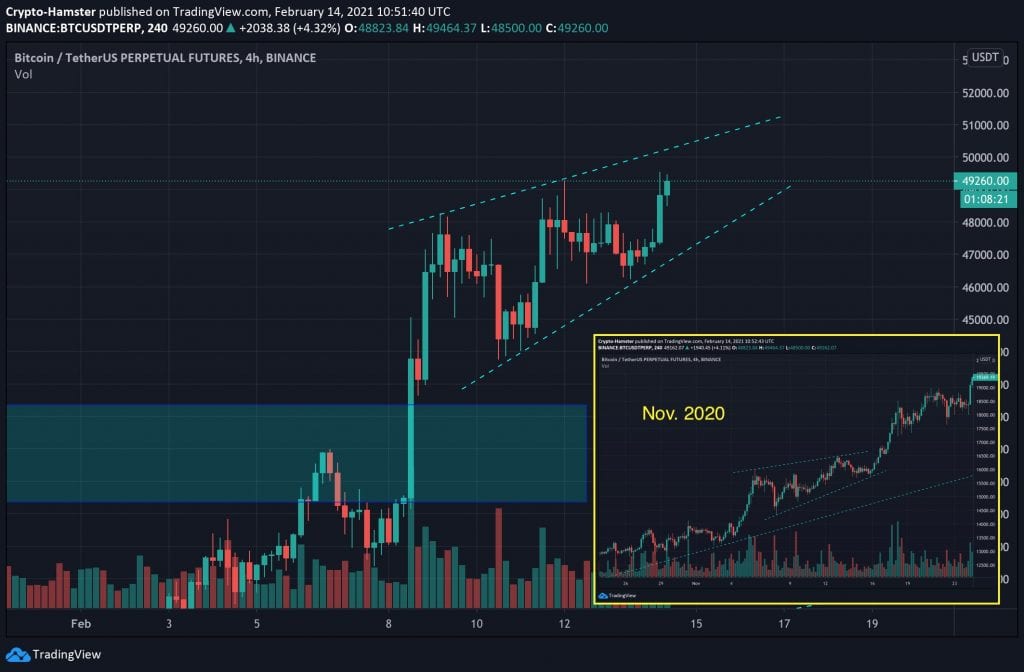Bitcoin is very close to hitting the $50,000-price level. And it looks like a start of a prolonged bull run.
As per the analysis presented by CryptoHamster, an independent market analyst on Twitter, the flagship cryptocurrency is trading inside a Rising Wedge pattern. Typically, such chart structures signal bearish reversal following a strong uptrend. Nonetheless, CryptoHamster cited an example from November 2020 that did the opposite.
“Despite the overall overbought state, the trend is strong, so no wonder if it is broken to the upside against the statistical expectation,” the analyst tweeted. “A similar situation was in November last year.”

In retrospect, the BTC/USD exchange rate blasted above the Rising Wedge pattern, rising 67 percent from the breakout point to claim its then-record high of $41,986. Even then, the pair was alerting about its extremely overbought levels. Nonetheless, bulls overtook the sentiment amid an increasing institutional interest against a dwindling US dollar.
Bitcoin Bull Run
The fundamentals have not changed, but they have vastly strengthened. Bitcoin forms a Rising Wedge pattern against a backdrop of a flurry of new investments and service offerings. For instance, Tesla revealed last week that it holds $1.5 billion worth of Bitcoin in its treasury. Meanwhile, Mastercard and BNY Mellon announced crypto-enabled payment and custodian services, respectively.
Twitter CFO Ned Segal also flirted with the idea of adding Bitcoin to their company reserves, primarily if their staff and vendors start demanding it for their salaries and payments.
All the catalysts pointed to one thing: the demand for Bitcoin would increase in the near future. That prompted traders to raise their bids for the flagship cryptocurrency this Sunday as it attempted to close above $50,000, a benchmark level for an asset that was trading for just $150 five years ago.
“We are potentially at the birth of a new asset class,” Duncan MacInnes, a fund manager at UK-based investment firm Ruffer told FT. “Bitcoin is emerging from the shadows, being co-opted by establishment institutions and becoming a legitimate alternative asset for investment portfolios.”
Ruffer, a traditional investment vehicle, invested $600 million in the Bitcoin market last year.
The TINA Factor
The reason why institutional investors are jumping from traditional asset classes from a nascent industry like Bitcoin is their declining trust in the US economy.
The country’s debt load has increased from $800 billion to $7.4 trillion through quantitative easing since 2008. That has effectively reduced the US dollar’s purchasing power as investors look for alternatives in riskier assets. Bitcoin, a scarce asset, has benefited likewise.
“As central banks started utilizing QE programs, one result has been the weakening of the currency. Since June, the central bank has been buying $120 billion in Treasury and mortgage securities a month until the pandemic has subsided,”
wrote Ty Young, researcher at Messari.
Bitcoin is rising alongside the most riskier assets because “there is no alternative,” or TINA, to cash.


